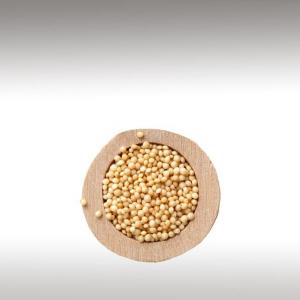
AMARANTH SEED OIL (AMARANTHUS CAUDATUS) - BASE OILS

BASE / GENERAL DATA
Information submited: June 22, 2015 Modified: March 29, 2018 By: OperaDreamhouse
Amaranthus, collectively known as Amaranth, is a cosmopolitan genus of annual or short lived perennial plants. Amaranth is grown in Asia and the Americas and harvested primarily for its grain, which is used as a food source forbread, pasta, and infant food.
Amaranth seed is called a grain by many, but technically it isn’t a truegrain. Amaranth tastes similar to other grains, and is used in much the same way. Quinoa is also in the Amaranthaceae family, and is also a pseudograin.
Catkin - like cymes of densely packed flowers grow in summer or autumn. Approximately 60 species are recognized, with inflorescences and foliage ranging from purple and red to green or gold. Members of thisgenus share many characteristics and uses with members of the closely related genus Celosia.
However, there are several other Amaranthus that are grown in other places of the world, that are used as food, both for the leaves and the seed.
Grain Amaranths produces a protein - rich seed. Each seed is only about 1/2 or 1/3 the size of a Quinoa seed, but each plant can produce up to 100,000 seeds or more, and they are easy to harvest.
Seeds from wild varieties are black, and seeds from the cultivated varieties are lighter in color (white, light brown, and pinkish - red seeds). Amaranth seems to be enjoying a slight rise in popularity.
"Amaranth" derives from Greek (Amarantos), "Unfading" with the Greek word for "Flower"(Anthos), factoring into the word's development as "Amaranth." The more accurate "Amarant" is an archaic variant.
Conventional, organic. Symbol of immortality in Greek, Amaranth is the oldest cultivated plant reputed never to fade. Obtained from Amaranth seeds. Contains Over 60% of unsaturated acids. Mainly composed of linoleic acid (omega-6) and oleic acid (omega-9). High content in Squalane.
The oil we use has been obtained via the latest and arguably most efficient method of extraction - Supercritical CO2. Carbon Dioxide which has been pressurised until it has become "Supercritical" (in two states - gas and liquid properties at the same time) is passed through the plant material acting like a solvent pushing out all of the raw active agents.
Once all of the constituents have been extractedthe pressure is released, the Carbon Dioxide becomes gas again leaving no trace, and you’re left with a complex extract including many particles you wouldn’t get through steam distillation.
Chemical structure:
Amaranth oil is a great of value. It contains about 77 % of non - saturated fatty acids (about 50 % of linolenic and linoleic acids, squalene and Vitamin E in the rare form of tocotriene which takes part in the biosynthesis of cholesterol.
Most importantly it is an almost unique extract in that is has up to 12% Squalene content.
Fatty oil with a high content of polyunsaturated fatty acids including 25 - 35% oleic acid and 42-52% linoleic acid as well as a 6 - 12% Squalene content.
Amaranth seed is called a grain by many, but technically it isn’t a truegrain. Amaranth tastes similar to other grains, and is used in much the same way. Quinoa is also in the Amaranthaceae family, and is also a pseudograin.
Catkin - like cymes of densely packed flowers grow in summer or autumn. Approximately 60 species are recognized, with inflorescences and foliage ranging from purple and red to green or gold. Members of thisgenus share many characteristics and uses with members of the closely related genus Celosia.
However, there are several other Amaranthus that are grown in other places of the world, that are used as food, both for the leaves and the seed.
Grain Amaranths produces a protein - rich seed. Each seed is only about 1/2 or 1/3 the size of a Quinoa seed, but each plant can produce up to 100,000 seeds or more, and they are easy to harvest.
Seeds from wild varieties are black, and seeds from the cultivated varieties are lighter in color (white, light brown, and pinkish - red seeds). Amaranth seems to be enjoying a slight rise in popularity.
"Amaranth" derives from Greek (Amarantos), "Unfading" with the Greek word for "Flower"(Anthos), factoring into the word's development as "Amaranth." The more accurate "Amarant" is an archaic variant.
Conventional, organic. Symbol of immortality in Greek, Amaranth is the oldest cultivated plant reputed never to fade. Obtained from Amaranth seeds. Contains Over 60% of unsaturated acids. Mainly composed of linoleic acid (omega-6) and oleic acid (omega-9). High content in Squalane.
The oil we use has been obtained via the latest and arguably most efficient method of extraction - Supercritical CO2. Carbon Dioxide which has been pressurised until it has become "Supercritical" (in two states - gas and liquid properties at the same time) is passed through the plant material acting like a solvent pushing out all of the raw active agents.
Once all of the constituents have been extractedthe pressure is released, the Carbon Dioxide becomes gas again leaving no trace, and you’re left with a complex extract including many particles you wouldn’t get through steam distillation.
Chemical structure:
Amaranth oil is a great of value. It contains about 77 % of non - saturated fatty acids (about 50 % of linolenic and linoleic acids, squalene and Vitamin E in the rare form of tocotriene which takes part in the biosynthesis of cholesterol.
Most importantly it is an almost unique extract in that is has up to 12% Squalene content.
Fatty oil with a high content of polyunsaturated fatty acids including 25 - 35% oleic acid and 42-52% linoleic acid as well as a 6 - 12% Squalene content.

SPIRITUAL PRACTISES DATA

MEDICINE / HEALTH DATA

BEAUTY / COSMETICS DATA

FOOD / COOKING DATA
COMMENTS
No comments.


